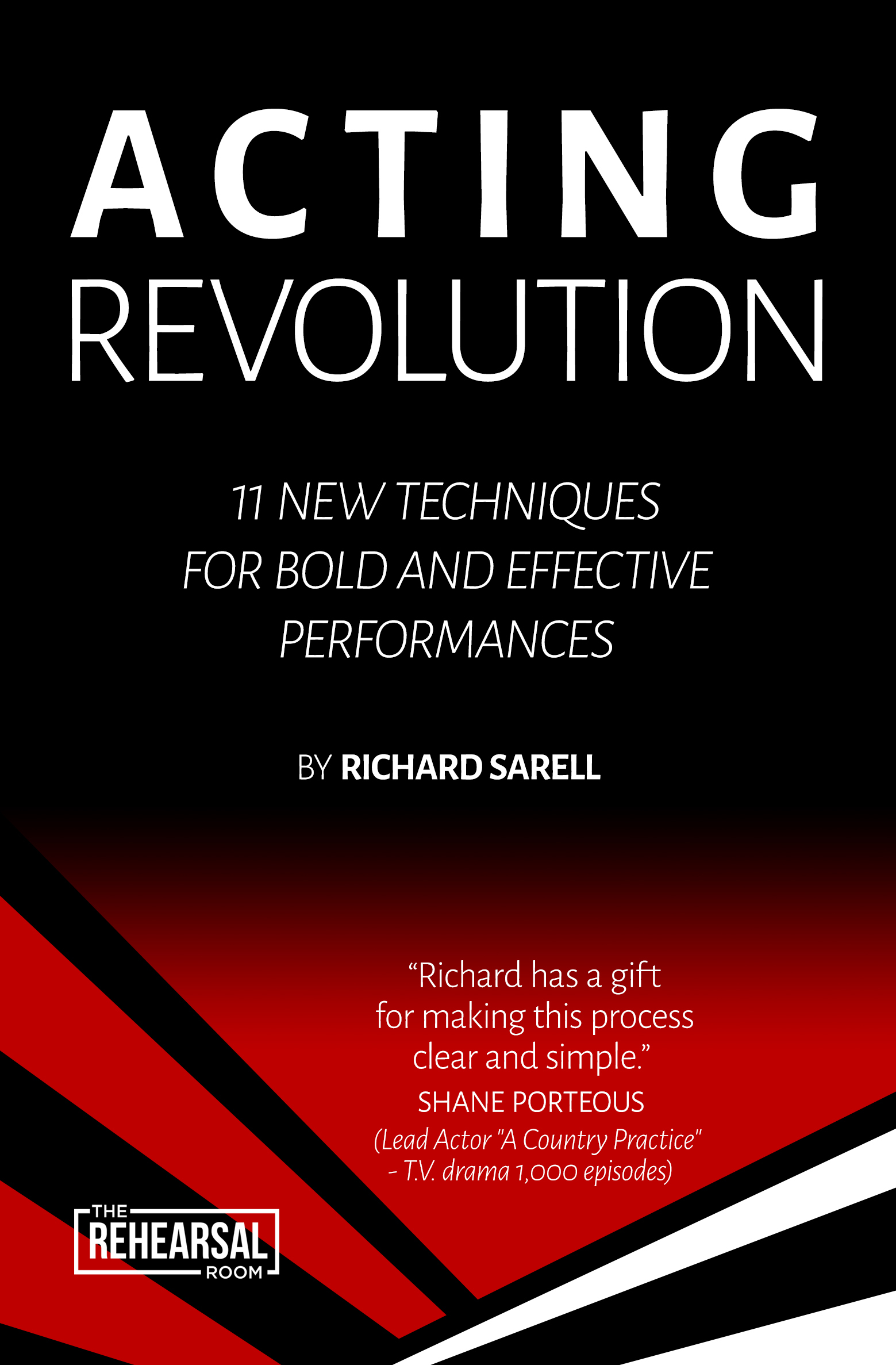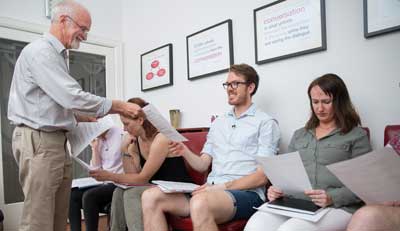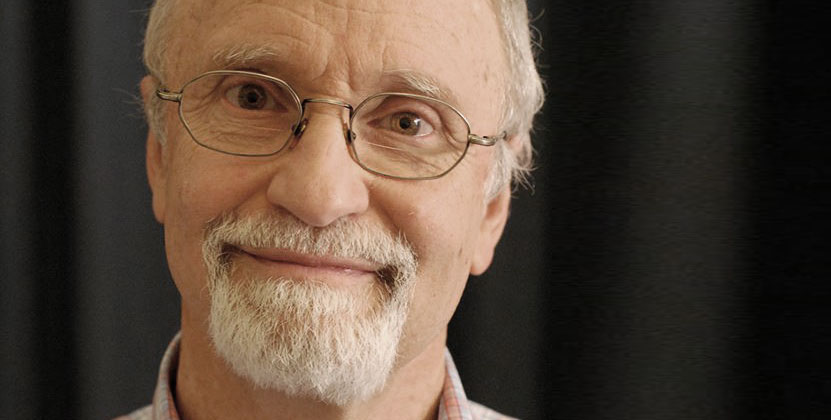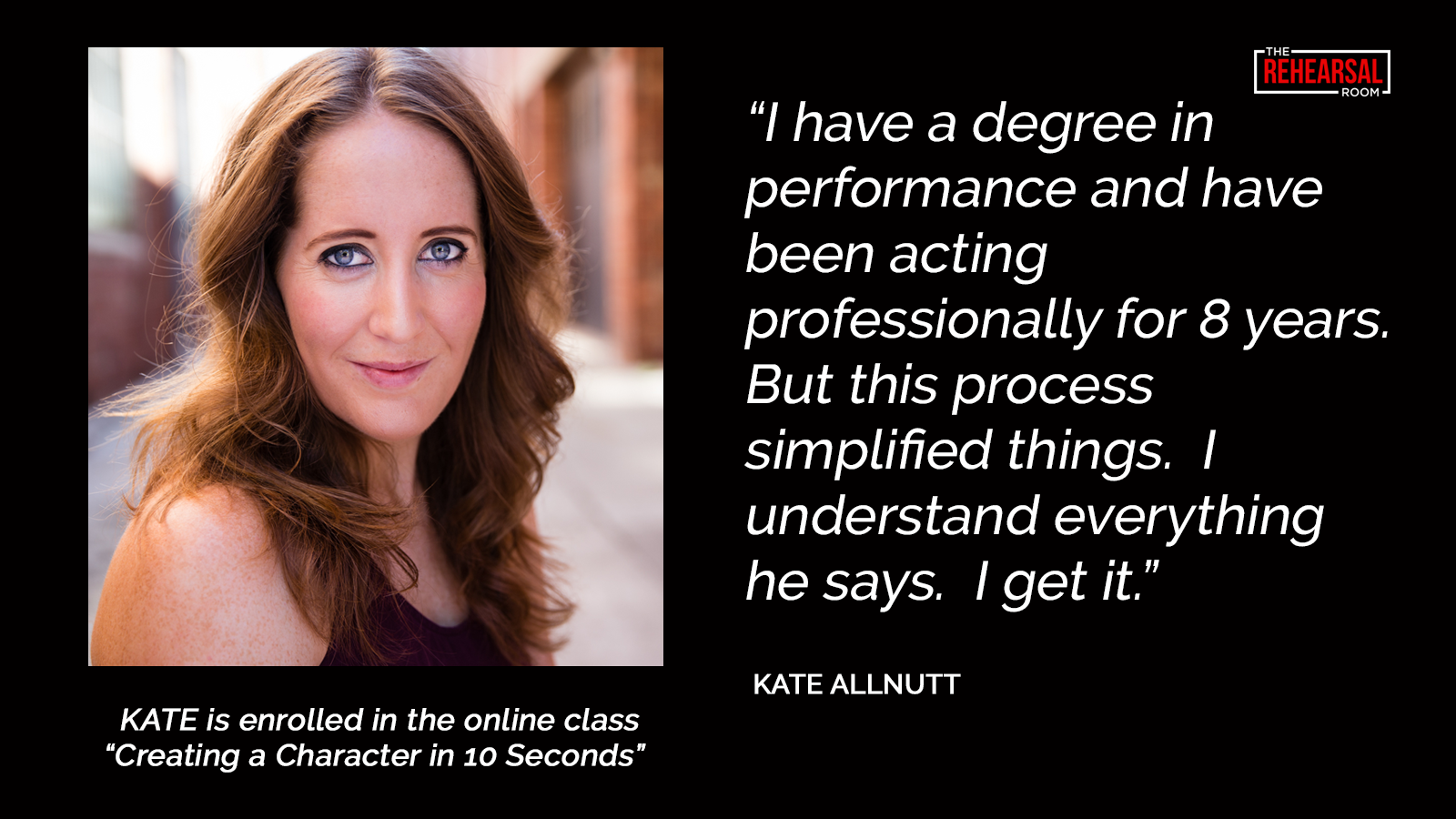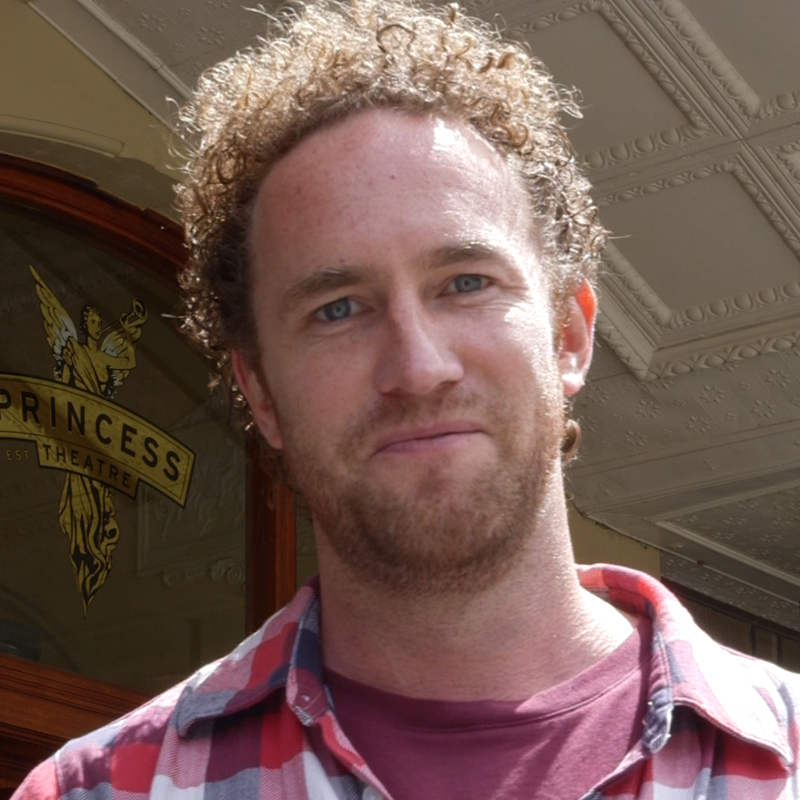Online Acting Tips – Current List
By Richard Sarell | Online Classes
YOUR GROWING LIST OF ACTING TIPS
These tips are profoundly simple and very practical. They are not an acting lesson in themselves but they will clearly point the way to the concepts and skills you need to work on. They will also raise your awareness of the mindset that is required to manage the exciting and rewarding job of being an actor.
You will also find FREE exercises that enable you to test out the concepts.
For $20 (AUS) you can have ongoing access for 12 months to this ever-growing list of tips – emails will update you as new tips become available. Enrol for the tips here. Or purchase "Creating a Character in 10 Seconds - PREMIER" and you will immediately have access to "Tips to Inspire" for free for 12 months.
IF YOU HAVE ANY QUESTIONS EMAIL … Richard@rehearsalroom.com (put “Online Question” in the subject line)
TIP 1: An Important Difference
The key foundation of this approach to acting is to be able to separate a character’s conscious and unconscious impulses. No other process makes this important separation so clear. ACTING TECHNIQUE CHARACTER
FREE EXERCISE INCLUDED WITH THIS TIP. Some instructions and a scene to enable you to test out these concepts. If you wish you can send them to The Rehearsal Room for personal feedback.
Tip 2: The Importance of the Story
Understanding the Importance of the Story – acting techniques focus on lots of specific processes but none of them focus on how to deliver the story – that’s The Rehearsal Room difference. STORY TECHNIQUE
Tip 3 Being Totally Real
The key to being totally real is connected to managing the relationship and conversation as separate entities. ACTING TECHNIQUE CHARACTER
Read the blog "I Got the Job"
Tip 4: Beginnings and Endings
Relaxation – is a big deal for any performer but so are beginnings and endings.
ACTING TECHNIQUE
Tip 5: Instigating and Responding in a Conversation
Keeping an audience engaged through the middle of a scene is the next important step once you have engaged them with the beginning of the story. ACTING TECHNIQUE
Tip 6: Conversation Structure
Understanding that conversations have a structure and how that structure works is a fundamental skill for an actor. Conversations always have an ‘Instigator’. ACTING TECHNIQUE
Tip 7: The Importance of Listening
Listening is the key to being real. ACTING TECHNIQUE
(This tip was recorded in 2017 in a different format)
Tip 8: The Key to Great Listening
Actors often confusing hearing with listening. This tip clearly defines the difference. ACTING TECHNIQUE
Tip 9: The Importance of Owning the Space
A simple fundamental of acting can be easily corrupted if the actor doesn’t understand how their mind might works. ACTING TECHNIQUE
Tip 10: A Professional Choice
Never stop a take if you can keep going. The professional choice is to keep going. Your feeling that a performance isn’t going well is notoriously unreliable. ACTING TECHNIQUE
Managing the actor’s mind.
Tip 11: Mind Management
There is a problem with overloading the mind with too much information. For the actor, stoking the fire too much can mean you block up the chimney. ACTING TECHNIQUE
Tip 12: A Fundamental of this Technique
The importance of managing the actor’s mind when making acting decisions is important territory that is often overlooked – this is the focus of The Rehearsal Room technique. ACTING TECHNIQUE
Tip 13: Making the Best Choices
Psychologists tell us how our minds function in life and when actors understand how our minds make decisions then they can work at applying those processes to their acting. ACTING TECHNIQUE & STORY TECHNIQUE
Tip 14 The Reading Problem
The actor’s reading skills can sometimes be more of a hindrance than a help. One important tool to manage this problem is to move away from literary intuitive choices and get specific with the details. ACTING TECHNIQUE & STORY TECHNIQUE
Tip 15: Fear Vs Logic
Fears and self-doubts run our lives. Don’t let fears or self-doubts tell you there is a problem. Use your logic. It might tell you there isn’t a problem at all. ACTING TECHNIQUE
Tip 16 Measuring Your Success
Acting is such an ephemeral task that no one offers specific ways of measuring your achievements – if the audience says they like it that’s the best you are likely to get. But MEASURING SUCCESS is an essential skill for the actor. It can only be done by understanding the practicalities of the actor’s craft. ACTING TECHNIQUE
If this tip makes sense to you but you want more specific information about how to measure your performance success then Tip No 20 will give you some additional food for thought.
Tip 17 Patterns are a Problem
Many of the techniques actors use for learning lines or movement result in them getting locked into patterns. The result is that the acting looks controlled rather than spontaneous. This tip evolved from a very successful application of this technique to a production of Shelagh Stephenson’s “The Memory of Water” which I directed in 2017. ACTING TECHNIQUE & STORY TECHNIQUE
Tip 18 Playing a Three Hander
The way people behave in groups is fascinating. The challenge for the actor is creating group behaviour in a logically organized way. ACTING TECHNIQUE
Tip 19 A Challenge for You
Psychologist Daniel Kahneman in his book “Thinking fast and slow” tells us that in life we “We can be blind to the obvious, and we are also blind to our own blindness.” So … how good are we at assessing our choices?
ACTING TECHNIQUE
& STORY TECHNIQUE
Tip 20 Measuring Your Performance in an Audition
The greatest moment of uncertainty for any actor is as they walk out of the audition room. How do you know how you went?? Here’s a simple checklist that achieves a very clear performance assessment
of your audition or any performance. It works!!
When you come out of an audition you can assess how you went.
ACTING TECHNIQUE & STORY TECHNIQUE
TIPS TO INSPIRE 2:
Tip 21 A Path to Being Real
Understanding the core elements of what you are doing provides the foundations on which true achievement is built. A core process element is that acting isn’t about what you are doing, acting is all about what the other person is doing.
ACTING TECHNIQUE CHARACTER
Tip 22 The Importance of Listening to Relationship
This is one essential skill area that has traditionally been left to chance in every acting process until now. The Rehearsal Room’s analysis of how we listen and the development of techniques to generate skills that parallel the way we actually do it in life are unique.
ACTING TECHNIQUE CHARACTER
PROMOTION ONE: Learn more about this acting process
An opportunity to find out more about the nuts and bolts of this approach to acting and what makes it so unique and so practical. Sophia who was doing “Creating a Character in 10 Seconds” explains a discovery she made. She found, to her surprise, that she could completely change the focus of her listening.
Tip 23 19.9 What Makes a Good Audition
Understanding what makes an audition good is the key to being able to put the elements in place to make sure your next one hits the spot.
AUDITION SKILLS
Posted 12/7/2019
TIP 24 Making Your Character Real
It is very easy to over-complicate simple tasks. A simple reality is that Constantine Stanislavski, for all his genius, is too complicated to manage effectively. This is a brilliant simplification of Stanislavski process to make it actionable in a modern world.
ACTING TECHNIQUE CHARACTER
Posted 14/7/2019
TIP 25 A Great Lesson Via Uta Hagen
I often see actors refusing to follow their natural impulses because they are waiting for their ‘cue’. An actor who is waiting for a cue is dysfunctional. A script is only a graph that lays out the dialogue it isn’t a description of how the character should listen and behave. This great thought from German actor Alfred Bassermann (1867 – 1952) comes from Uta Hagen’s experience of working with him.
ACTING TECHNIQUE
Posted 16/7/2019
Tip 26 The Choice to Look Away
Often Casting Directors are heard to say “Don’t just stare at the other character, look away, the way we do in life.” But do you know why you look away in life? Do you understand what impulses drive your choices in a conversation? There is a simple way to decide if you should look away or not.
This tip also explores the challenges of learning acting from books.
ACTING TECHNIQUE
Posted 17/7/2019
Tip 27 How to Action Your Script
'Actioning’ your script with an appropriate verb is a long-standing technique that has been taught in major tertiary acting academies around the world. This is an incisive analysis of its value and a very powerful tip on managing its deficits.
ACTING TECHNIQUE
Posted 5/8/2019
Tip 28 High Quality Listening
Whether in the audition room or on the set, for the actor, it is the quality of the listening that determines the quality of the performance. How to listen to all the meaning in the dialogue is the focus of this tip very useful tip. When you can do this your performance will be FOUR TIMES BETTER.
ACTING TECHNIQUE
Posted 18/8/2019
Tip 29 Making Choices That Feel Right
How you feel about your acting choices has always being something that actors believe is important. But it is absolutely possible, because of the way our minds work, to let feelings override logic – then that happens we can have big problems. Getting the balance right is important.
ACTING TECHNIQUE
Posted 18/8/2019
Tip 30 The Challenges of a Nude Scene
Performing the intimacy of a sex scene in front of onlookers is a challenge for any actor. But to be confronted with this option on your first big professional gig is a whopper of a challenge. Wesley Forke shares the things he learnt when he had to deal with these circumstances.
WORKING ON THE SET
Posted 25/9/2019
Tip 31 A Practical Approach to Pre-history
Pre-history or back-story is an area where a lot of the discussion sounds purposeful but is in fact very vague. This is the first of a series of tips on a practical approach to sorting out you character’s pre-history.
ACTING TECHNIQUE
Posted 7/9/2019
Tip 32 Using Pre-history on a Feature Film Shoot
ANTHONY SHARPE'S first large feature film role was a challenging one. He is an actor who uses The Rehearsal Room’s processes and he used those techniques to plot his way through this role. He finds it faster and more effective than other processes. In this interview he explains how he went about using the pre-history element to set up a scene. This is the second in a series of tips on managing pre-history choices.
ACTING TECHNIQUE – PRE-HISTORY
Posted 14/10/2019Tip 33 Problem Solving is an Acting Skill
Problem solving is not only an acting skill it is a mind management problem. A group of actors came together to explore things that niggled them. What we found was that niggles are often a sign of a much bigger problem. The result was four very useful tips for solving seemingly insurmountable problems.
ACTING TECHNIQUE – PRE-HISTORY
Posted 6/11/2019
Tip 34 A Practical Definition of Character
How to create a character is an important task for an actor. Yet it is one that is mostly dealt with in very vague terms in all the acting literature. The Rehearsal Room has evolved a very specific definition of character. As a result of this clear thinking approach actors who use these techniques can create or change the fundamentals of their character in 10 seconds. This technique is perfect for the modern screen actor who has to work fast and produce results of international standards.
ACTING TECHNIQUE CHARACTER
Tip 35 Two Essential Ingredients of Character Creation
Creating a character is only one issue. How to balance the character’s needs against the text or dialogue is the next hurdle for the actor. That is the key to creating a lifelike complexity. Actor ELlMIR ASIPI explains how he used these techniques to create a challenging character for his first guest role on “Neighbours”.
Tip 36 Two Essential Ingredients of Character Creation
Three actors demonstrate the importance of a professional understanding of managing your centre of gravity in performance. Energy levels in the body have a huge impact on the performance outcome. Understanding how they work is an essential tool. Explore how your energy actually moves in real life and how you can easily control it in performance.
Tip 37 How to Make a Conversation Real
Conversations have a number of specific and measurable patterns and qualities. Using an actual performance of a scene to demonstrate the point, this tip explores the importance of ‘Stepping UP’ and why it makes a conversation look real. It also explains another outcome from understanding how Centre of Gravity works for the actor.
ACTING TECHNIQUE
Posted 30/6/2020
FREE EXERCISE INCLUDED WITH THIS TIP. Some instructions and a scene to enable you to test out these concepts. If you wish you can send them to The Rehearsal Room for personal feedback.
ONGOING UPDATES ARE AUTOMATICALLY EMAILED TO YOU
Once you have subscribed to "Acting Tips to Inspire" you will receive regular reminders of new updates. You will also receive information of other developments in services and classes at The Rehearsal Room.
Learn skills you will use throughout your career. Learn to be real, to be versatile, to be a great listener and to be skilled in auditions.
Enter your text here...



